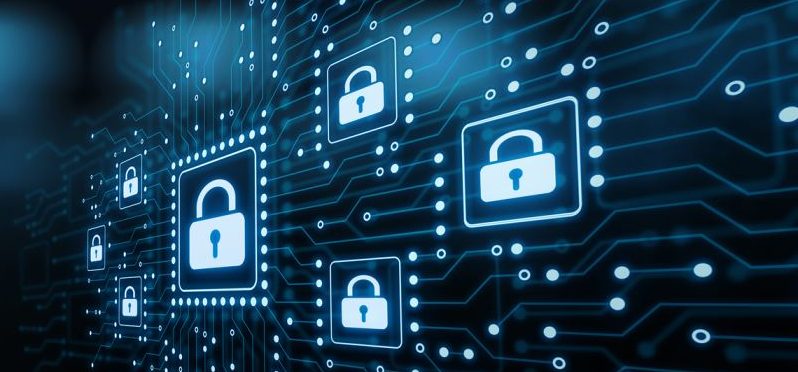Essential Cyber Security Practices for Effective Data Destruction Strategies
Essential Cyber Security Practices for Effective Data Destruction Strategies
Blog Article
Exactly How Proper Information Devastation Adds to Robust Computer Safety And Security Providers and Mitigates Threats of Data Violations
In today's digital landscape, the importance of appropriate information destruction can not be overemphasized, as it functions as a fundamental element of comprehensive computer system safety services. By applying efficient information erasure methods, companies not just safeguard delicate information from unauthorized accessibility however additionally reinforce their conformity with regulative structures - data destruction. The effects of inadequate data damage expand beyond mere conformity; they can greatly affect an organization's cybersecurity pose and reputation. Comprehending these measurements increases crucial inquiries about the techniques in area and their performance in an era of intensifying cyber dangers.
Importance of Information Devastation
In today's electronic landscape, the value of information damage can not be overstated. As organizations increasingly rely upon digital possessions, the possible threats related to information violations and unapproved gain access to intensify. Effective information devastation is a crucial element of an extensive information safety method, guarding delicate details from falling under the hands of harmful stars.
When data is no more needed, simply erasing files or formatting hard disk drives wants. Recurring data can frequently be recouped using readily offered devices, posing substantial dangers to both organizations and people. This highlights the need for robust information damage practices that make certain all information is irretrievably erased.
Furthermore, regulative compliance mandates, such as GDPR and HIPAA, stress the responsibility to shield delicate data, including its proper disposal. Non-compliance can result in severe legal effects and economic penalties. data destruction. Therefore, integrating reliable information damage procedures not only enhances protection but also fortifies a company's reputation and dependability

Techniques of Secure Data Erasure
Numerous efficient methods of protected information erasure can be used to make certain that sensitive information is permanently removed from storage gadgets. One widely identified method is data overwriting, which involves replacing existing data with arbitrary patterns numerous times. This method substantially reduces the chances of data healing, although it might not work versus advanced forensic techniques.

Physical devastation is additionally a trusted technique, where storage space gadgets are made pointless through shredding, crushing, or incineration. This approach guarantees that data can not be recuperated whatsoever however calls for cautious handling of hazardous products.
Lastly, specialized software application devices created for safe and secure data erasure provide functionalities that follow various erasure criteria. These devices often include attributes like confirmation processes to confirm effective information destruction.
Using these methods in combination can improve information safety and minimize the risks related to information violations, making sure that delicate info is not unintentionally revealed.
Legal and Compliance Considerations
The approaches utilized for protected information erasure not only serve to shield delicate info yet also should align with lawful and conformity frameworks governing data protection. Organizations are required to follow different guidelines, such as the General Data Security Regulation (GDPR), the Health Insurance Policy Transportability and Responsibility Act (HIPAA), and the Repayment Card Industry Data Safety And Security Standard (PCI DSS) These regulations mandate specific methods for data managing and damage, ensuring that individual and delicate data is irretrievably erased when no more needed.
Failing to abide by these legal requirements can lead to substantial fines, including fines and reputational damage. Furthermore, companies must maintain records of data damage procedures, showing conformity during audits or examinations. This documents not only shields against lawful repercussions however also strengthens trust with stakeholders and consumers, showcasing a dedication to data protection.
Including lawful and conformity factors to consider right into information devastation techniques is necessary for any organization. It reduces the threat of data violations and highlights a positive method Source to safeguarding delicate information, eventually promoting a society of safety and security and liability across the organization.
Effect On Cybersecurity Pose
Effective data devastation dramatically improves a company's cybersecurity stance by lowering the prospective assault surface area for cyber hazards. When delicate data is not appropriately ruined, it continues to be easily accessible to malicious stars who can exploit this info for unapproved access, identity theft, or company reconnaissance. By carrying out durable information devastation protocols, companies can successfully decrease the danger of data violations and boost their general security framework.
Moreover, the protected disposal of unneeded or outdated data not just safeguards delicate details however also assists companies abide by market laws and requirements. Failing to adequately ruin information can result in extreme lawful repercussions and reputational damages, more compromising an organization's cybersecurity position.

Eventually, prioritizing reliable data devastation is crucial for promoting a robust cybersecurity posture, making sure that organizations remain cautious against evolving cyber hazards click for source while securing their crucial possessions and stakeholders.
Best Practices for Organizations
Carrying out ideal practices for information devastation is crucial for companies aiming to protect delicate information and reduce cybersecurity threats. Companies need to establish an extensive data devastation plan that outlines obligations and treatments. This plan needs to follow relevant guidelines, such as GDPR or HIPAA, making sure lawful consistency.
Second of all, it is vital to make use of accepted data sanitization techniques, including data wiping, degaussing, and physical damage, tailored to the sort of data and storage medium. Utilizing licensed specialists for data destruction services boosts the dependability of these approaches.
In addition, organizations must preserve a detailed supply of all information storage space tools, ensuring that all out-of-date or changed equipment undertakes damage. Normal audits of information devastation practices can help boost and identify weaknesses compliance.
Employee training is an additional crucial facet, as staff should comprehend the significance of data destruction and abide by developed methods. Lastly, companies ought to document all data damage activities to supply accountability and traceability, which can be very useful during audits or in the event of a breach.
Conclusion

One widely acknowledged approach is information overwriting, which official site includes replacing existing information with arbitrary patterns multiple times.The approaches employed for protected data erasure not just serve to safeguard sensitive information but also should align with legal and compliance structures controling data protection. These policies mandate certain methods for data managing and damage, ensuring that personal and delicate information is irretrievably eliminated when no longer required.
By applying durable data destruction procedures, companies can effectively reduce the danger of information breaches and improve their total safety structure.
In final thought, proper information damage is essential for improving computer safety and security solutions and reducing the dangers linked with information breaches. - data destruction
Report this page